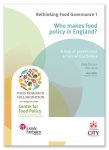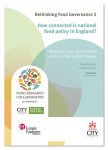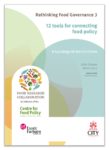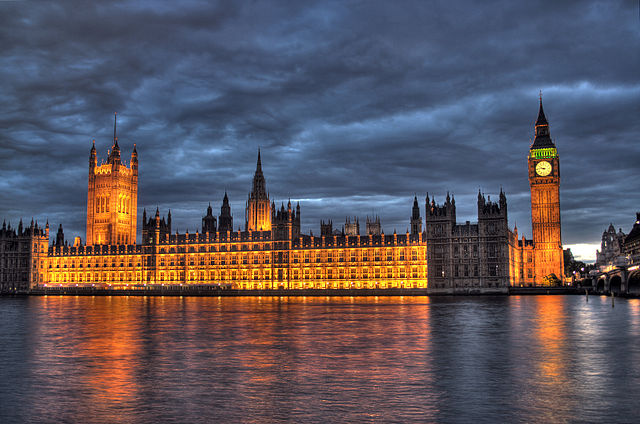Rethinking UK Food Governance
The Rethinking Food Governance project uses extensive documentary research coupled with in-depth stakeholder interviews to produce detailed pictures of how food policy is made.
The FRC’s Rethinking Food Governance project aims to show how governments make food policy, so that researchers and campaigners can understand the process better, identify blocks or duplications, and suggest improvements. The research for this project looks at the national level of government in England, but the methods and diagrams could be replicated for other regions or levels of government (such as City or Local Authority level).
The project has three parts:
 Who makes food policy in England? Part 1 identifies the national government departments and agencies involved in making decisions that affect the food system in England, and lists their key food-related activities. It shows that at least 16 different departments have a role in making food policy.
Who makes food policy in England? Part 1 identifies the national government departments and agencies involved in making decisions that affect the food system in England, and lists their key food-related activities. It shows that at least 16 different departments have a role in making food policy.
 How connected is national food policy in England? Part 2 explores the connections and disconnects in food policy, and explains why connected policy-making is vital to tackle the complex, multi-faceted problems facing the food system. The research presents nine examples of issues where there is evidence of good cross-government working, and 14 examples where evidence suggests better connections could be made.
How connected is national food policy in England? Part 2 explores the connections and disconnects in food policy, and explains why connected policy-making is vital to tackle the complex, multi-faceted problems facing the food system. The research presents nine examples of issues where there is evidence of good cross-government working, and 14 examples where evidence suggests better connections could be made.
 12 tools for connecting food policy: A typology of mechanisms Part 3 looks at the types of mechanisms that have been or could be used to better connect food policy-making in order to produce more coherent policy. The research identifies 12 ways in which connections can be made, ranging from soft, informal communicative mechanisms to harder, formalised mechanisms
12 tools for connecting food policy: A typology of mechanisms Part 3 looks at the types of mechanisms that have been or could be used to better connect food policy-making in order to produce more coherent policy. The research identifies 12 ways in which connections can be made, ranging from soft, informal communicative mechanisms to harder, formalised mechanisms

Building on the research:
The Rethinking Food Governance project has prompted several other countries to map food policy-making: find their reports on the Centre for Food Policy website.
We have produced a protocol outlining the research process, to help others to produce food policy maps.
Using the research in a different way, we used the list of government departments identified in Report 1 to map the government’s policy response to the Covid-19 crisis, as it affected the food system. We used the visualisation tool Flourish to present the results.
Based on our analysis, we recommended a cross-government committee on the food system should be established, to take responsibility for coordinating food policy during the pandemic and continuing into the renewal process and beyond.
Researchers in other countries have used the same methods to map the food policy response to Covid-19: find the results for South Africa here.
